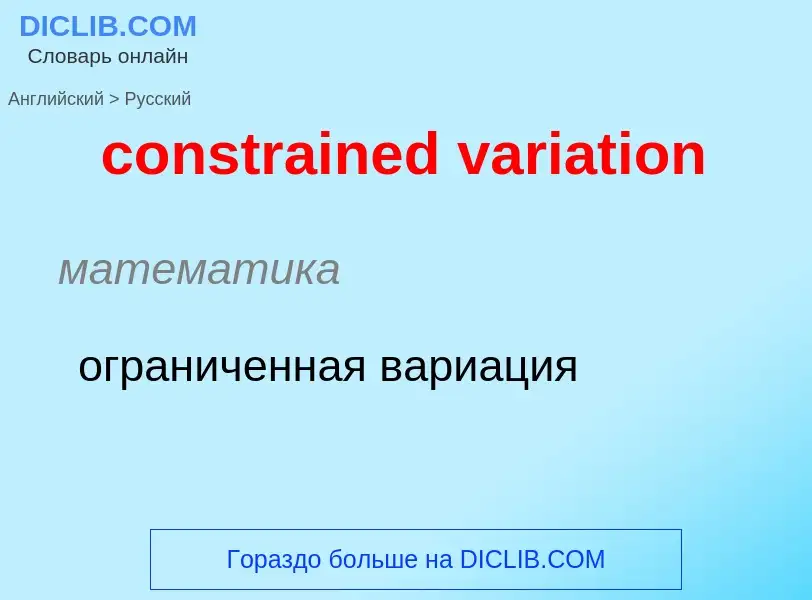Translation and analysis of words by ChatGPT artificial intelligence
On this page you can get a detailed analysis of a word or phrase, produced by the best artificial intelligence technology to date:
- how the word is used
- frequency of use
- it is used more often in oral or written speech
- word translation options
- usage examples (several phrases with translation)
- etymology
constrained variation - translation to russian
математика
ограниченная вариация
[ve(ə)ri'eiʃ(ə)n]
общая лексика
вариация
изменчивость
изменение
вариационный
варьирование
колебание
колебательность
магнитное склонение
неравномерность
отклонение
разновидность
ход зависимости
нефтегазовая промышленность
отклонение (от номинальной величины)
Смотрите также
существительное
общая лексика
изменение
перемена
варьирование
колебание
разновидность
вариант
отклонение
изменение, перемена
склонение магнитной стрелки
специальный термин
вариация
физика
магнитное склонение
грамматика
флексия
биология
аберрация
генетическая изменчивость
мутация
Definition
Wikipedia
The theory of facilitated variation demonstrates how seemingly complex biological systems can arise through a limited number of regulatory genetic changes, through the differential re-use of pre-existing developmental components. The theory was presented in 2005 by Marc W. Kirschner (a professor and chair at the Department of Systems Biology, Harvard Medical School) and John C. Gerhart (a professor at the Graduate School, University of California, Berkeley).
The theory of facilitated variation addresses the nature and function of phenotypic variation in evolution. Recent advances in cellular and evolutionary developmental biology shed light on a number of mechanisms for generating novelty. Most anatomical and physiological traits that have evolved since the Cambrian are, according to Kirschner and Gerhart, the result of regulatory changes in the usage of various conserved core components that function in development and physiology. Novel traits arise as novel packages of modular core components, which requires modest genetic change in regulatory elements. The modularity and adaptability of developmental systems reduces the number of regulatory changes needed to generate adaptive phenotypic variation, increases the probability that genetic mutation will be viable, and allows organisms to respond flexibly to novel environments. In this manner, the conserved core processes facilitate the generation of adaptive phenotypic variation, which natural selection subsequently propagates.

